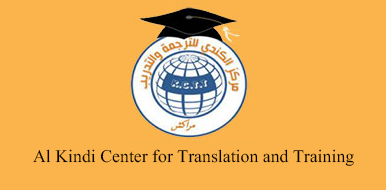Report of the lecture – The Miracle of Numbers in the Holy Qu’ran 2013
The Knowledge Integration and Translation Laboratory at the Faculty of Arts and Humanities in Marrakech organized on 30th May 2013 a rich lecture, characterized by uniqueness and novelty in the subject. It was delivered by the Iraqi researcher Dr. Lazim Muhsin. The lecture focused on the “Digital Miracles in the Holy Qur’an”. The lecture started by Dr. Hassani, the head of the session, in which he thanked the Director of the Center for Translation and Knowledge Integration Dr. Abdelhamid Zahid for his efforts to disseminate science and knowledge, and After that the floor has been given to the Dr. Lazim Muhsin in order to demonstrate the core of his ambitious project. The researcher began his lecture with a descriptive introduction to the subject, in which he highlighted the great importance it has, and the qualitative addition that is expected to add to the scientific research in general. He also emphasized that the subject of digital miracles represents a facet of miracles that are not affected by language restrictions which are a barrier for non-native speakers In Arabic, and from there, the digital miracle is considered by the lecturer an argument and a compelling proof that invalidates the skeptics’ arguments and deniers of his credibility and sanctity. The Iraqi researcher Muhsin considered that his work is not coincidental, and its features are not clear overnight, but it is the gist of a continuous effort that lasted for nearly three years of reading, contemplation and deliberation. He discovered that all the verses and words of the Qu’ran are subject to specific and exact numeric numbering along all the chapters from the opening to the last one, as Each letter in the Holy Quran carries a specific figure, and the process of collecting the numbers that form the letters of the word, he reached the fixed rule as he put it, Which is the focus of his hard work and ambition is The differences between the verses and the words in the Quran are limited to the number one or ten digits, while the name of the majesty in the Holy Qu’ran is numbered by eleven according to the numerical count. Among the models he proposed, which are many occasions almost cover all the Qur’an, we find, for example: He holds out promises “32” to them and raises vain desires in them “42”, and Satan promises them nothing but vain things (Al-Nisa 120) Then we changed their evil “42” condition into good “32” until they grew in affluence and number (Chapter Al ‘arf 95) Do they not know that Allah knows that they conceal “44” and what they disclose “45”? (Al- baqarah 77) He stressed that the least number of words is the most significant and he pointed out to the solid relationship between the holy Qur’an words through illustrating meaningful examples. After the lecturer has finished his lecture the word has been given to the chair of the session who thanked the professor wishing him success in his research career. Then he referred the word to the audience in order to participate and express his opinion and inquire about the ambiguity. The researcher was asked a number of questions, the purpose of which was to raise the lecturer’s guidance to a number of issues that would improve his research project to the best and from those questions: What is the basis of putting those numbers? What are the researcher reasons to neglect various Qur’anic sciences? In response to the questions, the researcher maintains the basis he adopted in assigning specific numbers to the Qur’anic letters. He postponed the presentation of the numbers associated with each letter in the Holy Quran until a book on the subject illuminates all the seemingly mysterious aspects of his research.

